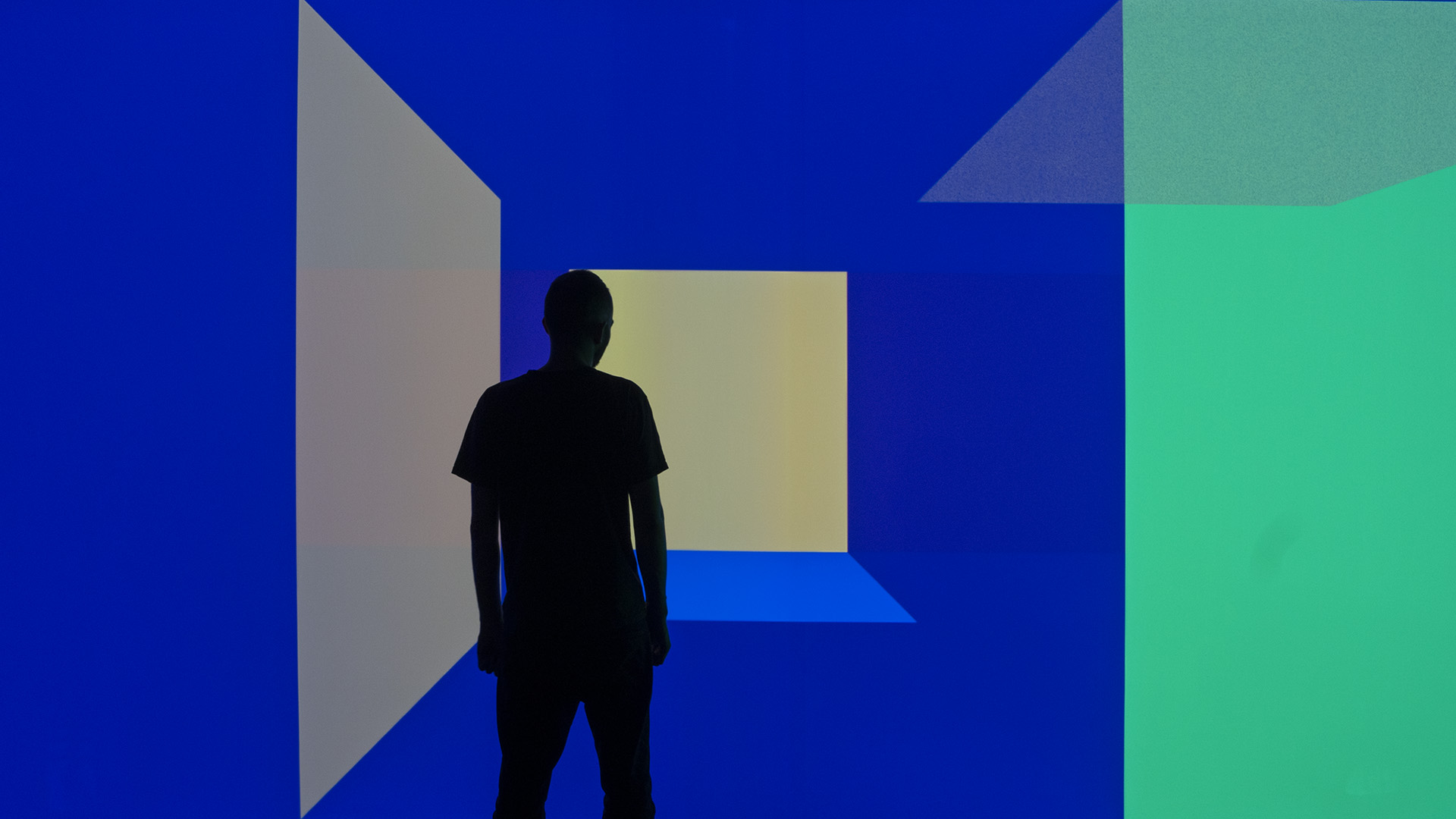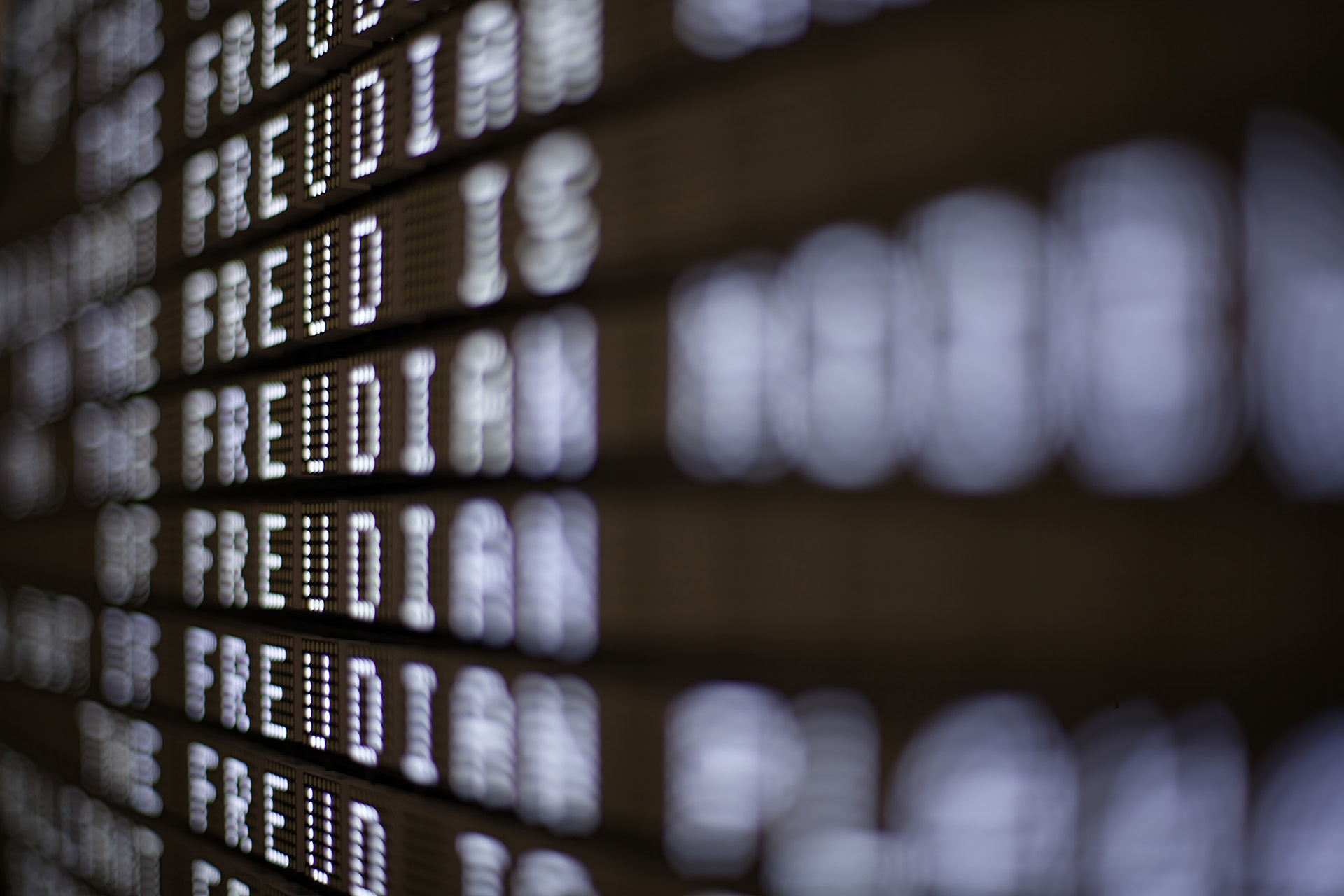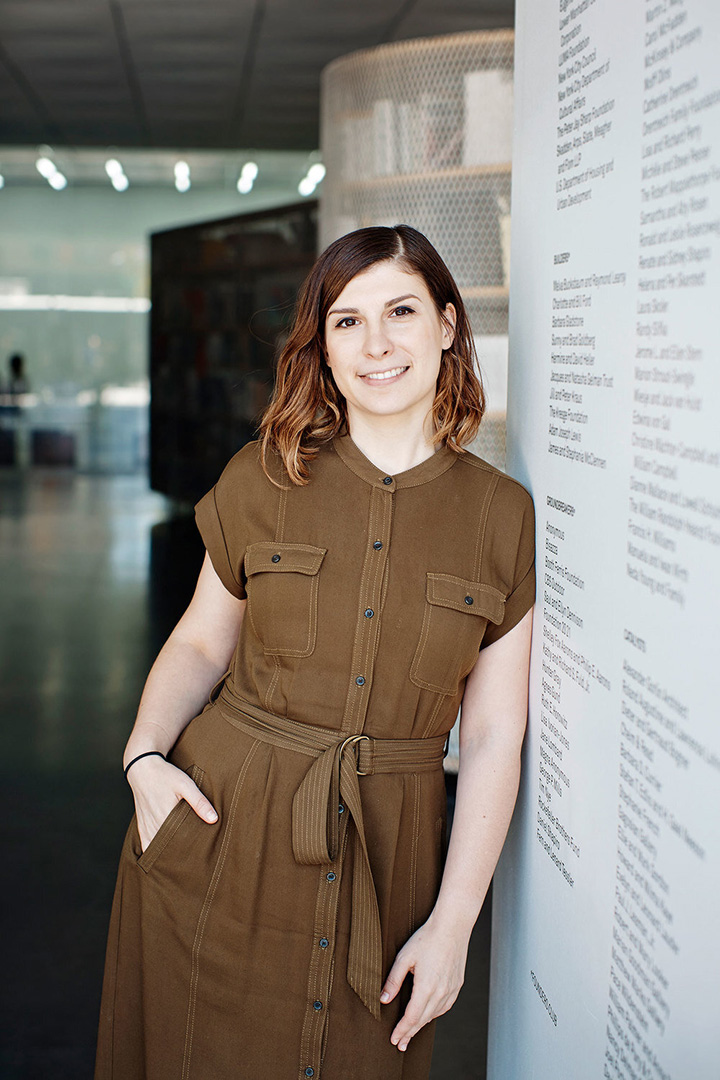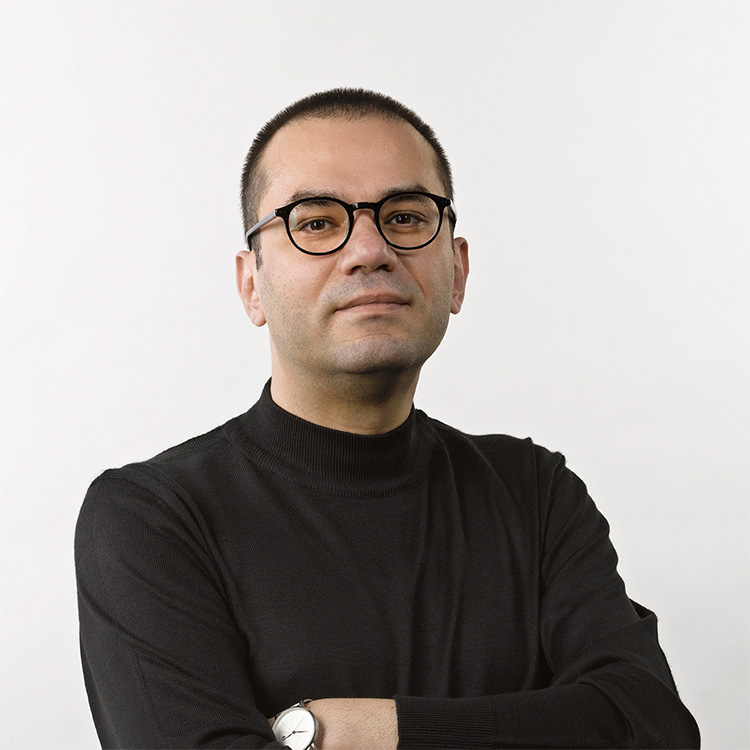Blog
An interview with Julia Kaganskiy on new media art and curatorship
19 October 2022 Wed
İbrahim Cansızoğlu: You are the founding director of NEW INC, an initiative of the New Museum of Contemporary Art in New York City and the first museum-led cultural incubator for art, design, and technology. During your directorship how did you develop the program for this institution and how did your experience in NEW INC shape your work in the following years as an independent curator?
Julia Kaganskiy: Actually, NEW INC was very much inspired by studios like UVA. Many of the artists and designers who passed through the program during my tenure cited UVA as an inspiration, both in terms of their creative practice and in terms of their studio’s operational model. UVA influenced a whole generation of new media artists and designers who leverage new technology to create artistic projects powered by custom software and hardware. Their practice combines art and engineering in unique ways to both develop a new visual language and, at the same time, reflect on technology’s growing role in shaping culture. This kind of work, which is a kind of Gesamtkunstwerk, often requires a collaborative approach, bringing together expertise from visual art, architecture, performance, musical composition, engineering, and more. It is highly multidisciplinary and challenges conventional artistic models, which tend to still be structured around a single artist and traditional media like painting, sculpture, and photography that is easier to sell and collect. The New Museum recognized that contemporary creative practice was changing in ways that required new models of support, and NEW INC was set up as an incubator for new forms of cultural production and a space to test out new models for sustaining experimental creative practice.
As a curator, I find that I am always drawn to art that reflects our present moment in both its form and content. For me, this has meant working with artists who are investigating the digital sphere and the impact of things like computational systems, social media, artificial intelligence, simulation, and immersive technologies on culture and society. Over the last few years, I have taken a deeper interest in the way computation intersects with environmental science in the form of planetary sensing systems, climate modeling, and bioengineering. This shift has been partially driven by the fact that so many artists are turning their attention toward this subject matter at the moment and also because, I think for most of us, the climate crisis feels increasingly urgent. In general, I try to follow the artists. I also try to see where there may be gaps in the dominant cultural discourse — for example, forms of creative practice that are maybe under-exposed or under-supported, especially in the US, which I find can be very conservative and market-driven. I see part of my role as a curator as creating a context and a platform for work that exists at the edges of contemporary culture but feels like it has something important to say about where we are and where we may be going. I guess I subscribe to Marshall McLuhan’s notion that art is a kind of “distant early warning system” that helps a culture understand what is beginning to happen to it.

United Visual Artists, Vanishing Point 3:1 #3, 2022.
Installation view.
İC: The institutional critique of museums mostly focuses on the socio-cultural aspects of the art ecosystem. However, the museum’s physical needs as well as its ability to embrace and display challenging types of artworks exploring technological advancements are rarely brought into question. How does your curatorial practice address these issues as you work in the space between institutional contexts?
JK: You’re right that many cultural institutions have been very slow to exhibit and collect digital art or even to embrace digital technologies as part of their communication and mediation strategies. This is often due to a lack of in-house expertise, such as curators or conservators who are fluent in the specific needs of software-based or networked art. This kind of work is indeed challenging and can be quite finicky and unstable, needing more maintenance and care than a painting or a sculpture. And museums, especially those with permanent collections and a mandate to preserve cultural heritage, can often be quite conservative and move at a slower, more considered pace which is often at odds with the rapid rate of technological development and obsolescence. Museums and non-profit arts spaces are also often strapped for resources, funding, and staff, which is something I’m very sympathetic to. At the same time, throughout my career, I have advocated for the importance of incorporating digital media in museums. One of my first jobs was in the newly created Digital Learning department at MoMA where we were tasked with imagining how digital media could help support education and interpretation around permanent and temporary exhibitions. More recently, while I was at NEW INC, I initiated a special track focused on Museum Technology in partnership with the Knight Foundation. I believe that increasing museums’ capacity and competency with digital media is essential for institutions to adapt, evolve with the times, and meet the changing expectations of audiences. And if they don’t build these competencies, it can be quite difficult to adapt to a situation like the pandemic, during which saw a sharp shift to digital programming as a result of the prolonged lockdown periods.
In terms of my curatorial practice, I often end up working in more experimental exhibition venues that take the form of pop-up exhibitions, festivals, Kunsthalles, or galleries specializing in time-based media like Borusan Contemporary. I also do quite a bit of consulting with cultural institutions that are looking to incorporate more digital media into their programming and need help understanding what that will entail and how to effectively strategize and plan for it. By no means do I think a virtual exhibition is necessarily better than a physical one, but I do think it’s important to acknowledge that there are many artists creating born-digital work that needs to be natively contextualized and presented. The digital is just such a fundamental part of contemporary culture at this point that I feel it’s impossible to avoid or ignore.

United Visual Artists, Etymologies, 2022, (detail).
İC: The Jungian interpretation continues to linger in contemporary artistic discourses. To my knowledge, a major attempt in this line was the positioning of the Red Book as a central theme in the 55th Venice Biennial by the curator Massimiliano Gioni. Especially Jung’s notion of synchronicity seems to provide valuable insights into our increasingly connected world. In the UVA: Edge of Chaos exhibition you present a commissioned work by the United Visual Artists, also dealing with the Jungian interpretation on a different level. Why did you choose this work titled Etymologies for the show and how does it interact with present reality?
JK: This new version of Etymologies actually draws on the collected written works of both Jung and Freud, putting the two famous psychoanalysts, who had very different theories of the subconscious and a somewhat adversarial relationship, into a kind of posthumous dialogue. Their texts become the data set for this work and are algorithmically sorted and re-organized according to certain keywords, such as “fear” or “doubt”. The words are reduced to pure patterns, which in turn invites the viewer to build new associations and construct new meaning through the process of inference, seeking out logic or poetry in the snippets of text. The intervention of the algorithm serves to mask or obscure the original meaning through de-contextualization and, as a result, any perceived connections are likely to be merely a projection of our own subjectivity. So, in that way, the piece is very closely linked to Jung’s notion of synchronicity or the linking of events or circumstances that appear to be meaningfully related but have no causal relationship. For Jung, these phenomena were closely linked to the idea of intersubjectivity, or the relationship between people’s cognitive perspectives. What I like about Etymologies is that it introduces the machine, by way of an algorithmic model, into this space of intersubjectivity. When we think of the role of machine learning, neural networks, and other forms of so-called artificial intelligence today, these are algorithmic models trained on vast troves of data largely produced by humans about ourselves and the world around us. It is probably the closest thing we have to a “collective unconscious,” even though it is by no means an accurate or complete representation, but rather one that is clearly biased towards a Western, white, and male normativity. So, in a way, AI itself works through something like synchronicity, often finding non-causal connections in the data that can produce new insights or be completely false and misguided.
İC: As you point out in your essay for the UVA: Edge of Chaos exhibition brochure, the information age presents new challenges for our limited cognitive apparatus. The information overload makes us more anxious, and our attention spans are significantly reduced. Can the crossings between art and technology ameliorate this cognitive crisis?

Julia Kaganskiy
JK: Honestly, I’m not sure. I do think that art can provide a space for contemplation and reflection that helps us escape the frenetic pace of the internet, social media, and our “always on” culture. Of course, these days most people seem to treat museums and galleries as glorified selfie backdrops, but I think the potential is definitely there and I think that many of the works in “Edge of Chaos” like Flux Paintings, Vanishing Point, and Phases are quite meditative. They really demand time, presence, attention, and close observation.
As far as the cross-pollination between art and technology goes, I’m not sure if they can necessarily “ameliorate our cognitive crisis” but I do believe there is inherent value in bringing together different perspectives, approaches, and ways of knowing. In my experience, artists ask different questions than technologists, they often creatively misuse technology, and they tend to be much more attuned to the cultural, social, political, and ecological impacts of technological systems. These are incredibly valuable interventions in the kind of “business as usual” approach to technological development, which tends to be driven by things like efficiency, productivity, and maximizing profits to the exclusion of things like poetry, beauty, or emotional connection. Technology wants to optimize for logic and rationalization, which are not inherently bad things, but these need to be tempered by something like art so that we don’t lose our humanity in the process. I’ve always loved this quote from Lewis Mumford, a historian and philosopher of technology who wrote, “power and order, pushed to their final limit, lead to their self-destructive inversion: disorganization, violence, mental aberration, subjective chaos.” I think art is a way of holding space for irrationality, of maintaining a connection to that which cannot be quantified or optimized.
İC: Another commissioned work in the exhibition is titled Vanishing Point 3:1 #3 and in this video, United Visual Artists presents novel compositions in collaboration between humans and machines. Apart from its challenges, you also highlight our enhanced cognitive capacities with the rise of artificial intelligence technologies. For this exhibition, how do you harness the coexistence of human and machine intelligence on an aesthetic level?
JK: Artists have been collaborating with computers and software since at least the 1950s and already in the 1960s, you had major exhibitions dedicated to software art like Computer-Generated Pictures (1965), Cybernetic Serendipity (1968), and Software (1970). Although the machines were far less powerful and took up an entire room, the process was not all that different. The artist would write a computer program—essentially a set of instructions—and this program would generate imagery either on a screen or perhaps through another output device like a pen plotter. Since computers were still mostly relegated to technology labs, artists would often collaborate with engineers at places like Bell Labs to jointly develop computer-generated animation software. I think part of what was appealing about this from an aesthetic point of view was the “serendipitous” nature of the process—a rule-based system might produce novel and surprising results, generating new aesthetic potentialities. In many ways, this still holds true today and we see this with works like Vanishing Point where the abstract geometric forms and sound compositions are procedurally generated based on a set of rules and parameters determined by UVA. It is actually incredibly difficult to create a program that consistently produces interesting compositions, but it can be very rewarding. For this new version of Vanishing Point, UVA introduced a color palette for the first time, and sometimes the software produces color combinations that the studio would never ordinarily select, so it kind of pushes the aesthetics in a new direction. On the other hand, artificial intelligence is really good at synthesizing complex interacting data sets that might be drawn from, say, environmental data or orbital data, as is the case with Phases. While the raw data sets would be impossible for us to make sense of, machinic intelligence can help us parse the information and locate the signal in the noise or translate it into a form that is more intelligible for us. Of course, recently we’ve seen an influx of prompt-based AI systems like Dall-E, Midjourney, or GPT-3 where there is a kind of back-and-forth exchange happening between human inputs and instructions and machinic outputs that are visual or textual. It creates an almost dialogic relationship between an artist and an AI system where there is a call-and-response happening and they gradually come to learn how to communicate with one another. It will be interesting to see how the widespread availability of these kinds of off-the-shelf tools pushes artists who have the ability to write their own software to search for new, uncharted aesthetic territories.
ABOUT THE WRITER
İbrahim Cansızoğlu
İbrahim Cansızoğlu, Istanbul based art writer and researcher.
He earned his undergraduate degree at Koç University Economics Department which he attended with full scholarship. He completed Sabancı University Visual Arts and Visual Communication Design Graduate Program with his MA thesis on aesthetics of moving image. At conferences organized by the University of Reading, the University of Hertfordshire and the University of Winchester, he presented his researches based on his thesis. He had a certificate from London Film Academy. He taught in film, visual theory, visual culture and contemporary art at Izmir University of Economics and Kadir Has University.
He worked at Galeri Nev Istanbul between 2012 -2015. He took on the task of curatorship in independent projects and in the context of Protocinema Emerging Curator Series in 2017. He continues to contribute art magazines Sanat Dünyamız and Art Unlimited with interviews and articles. He writes for the online art platform Argonotlar.




